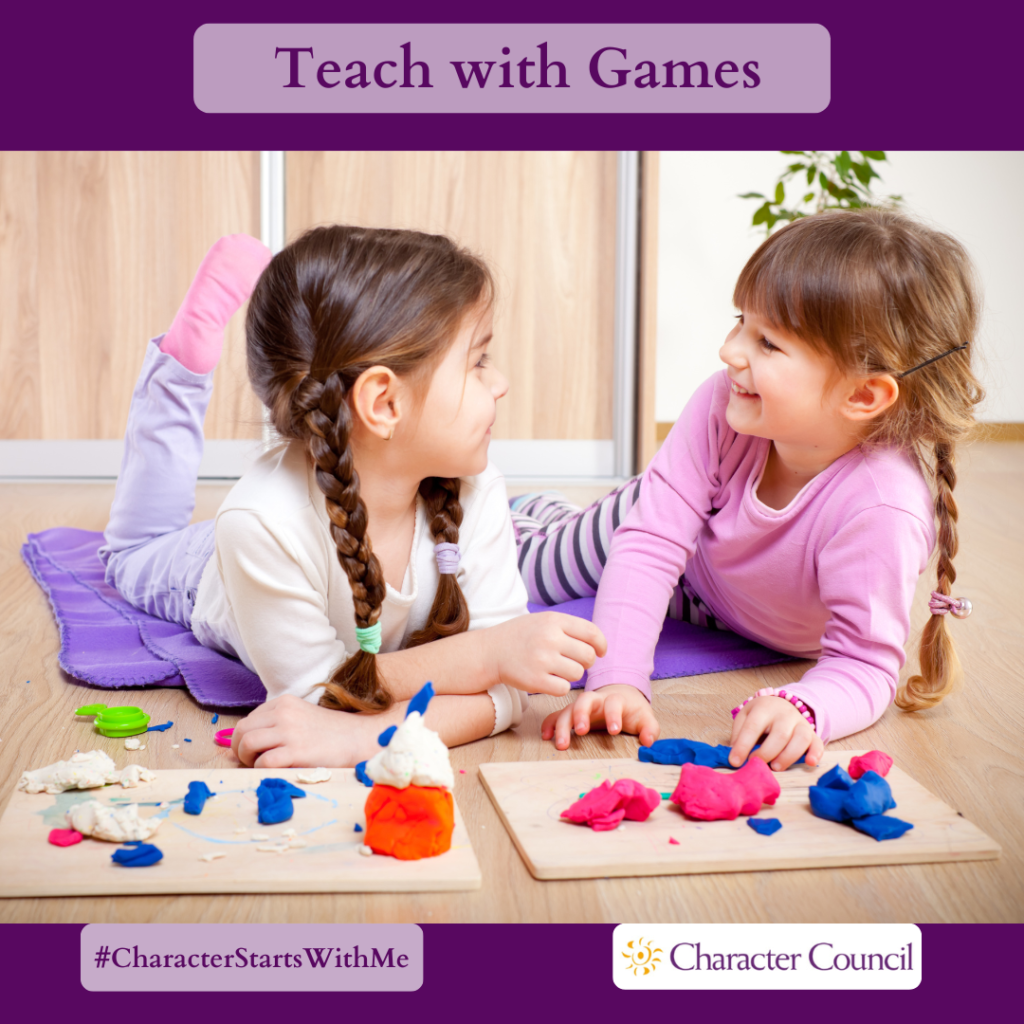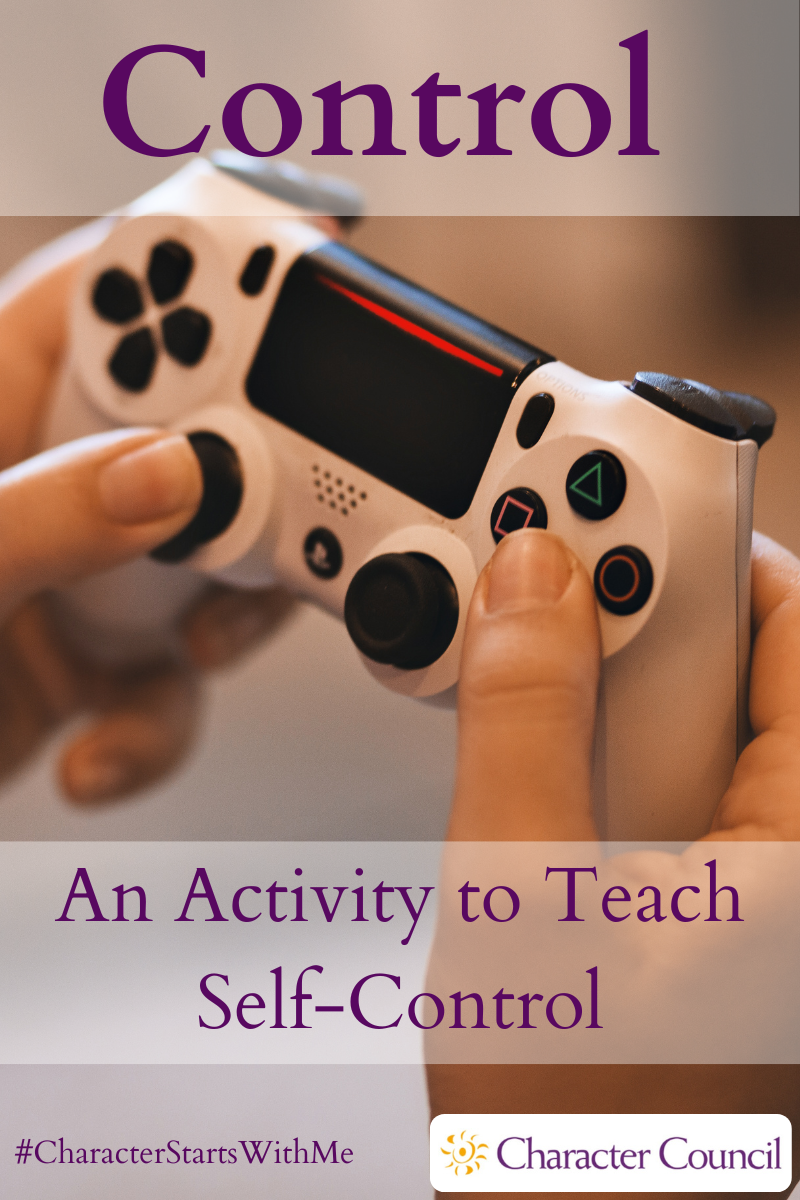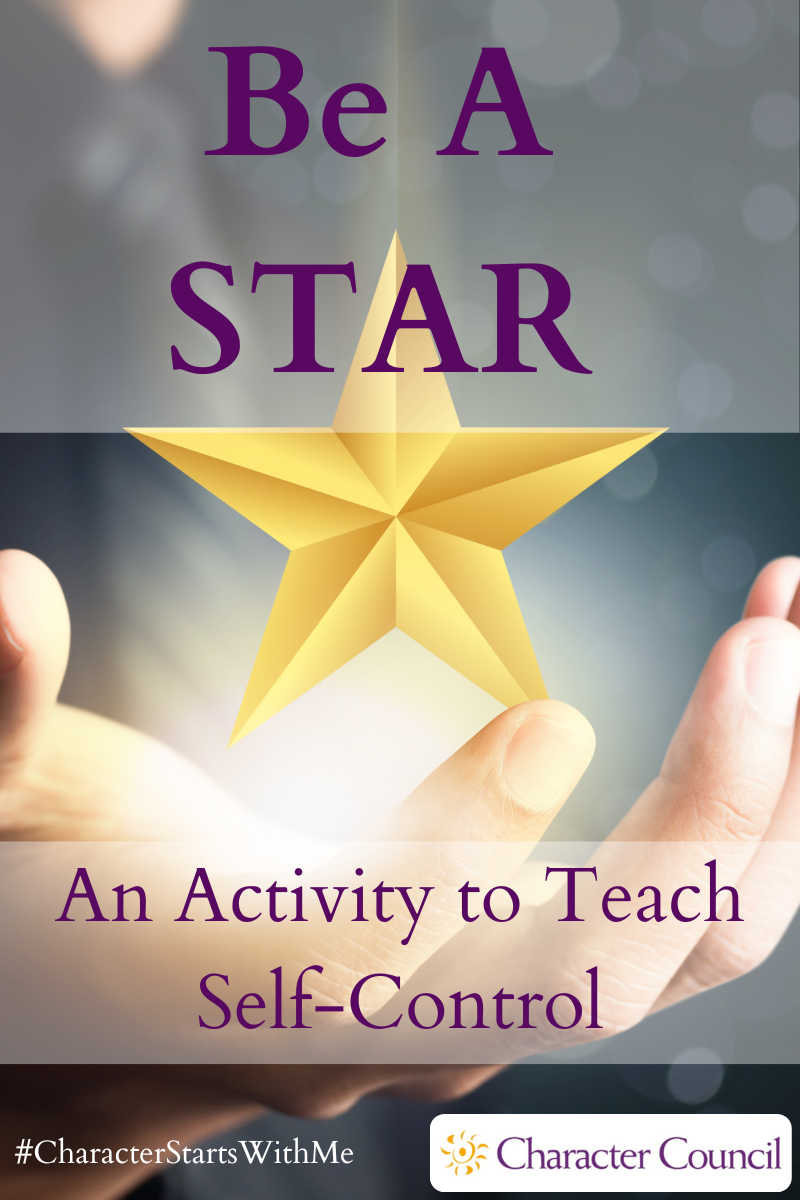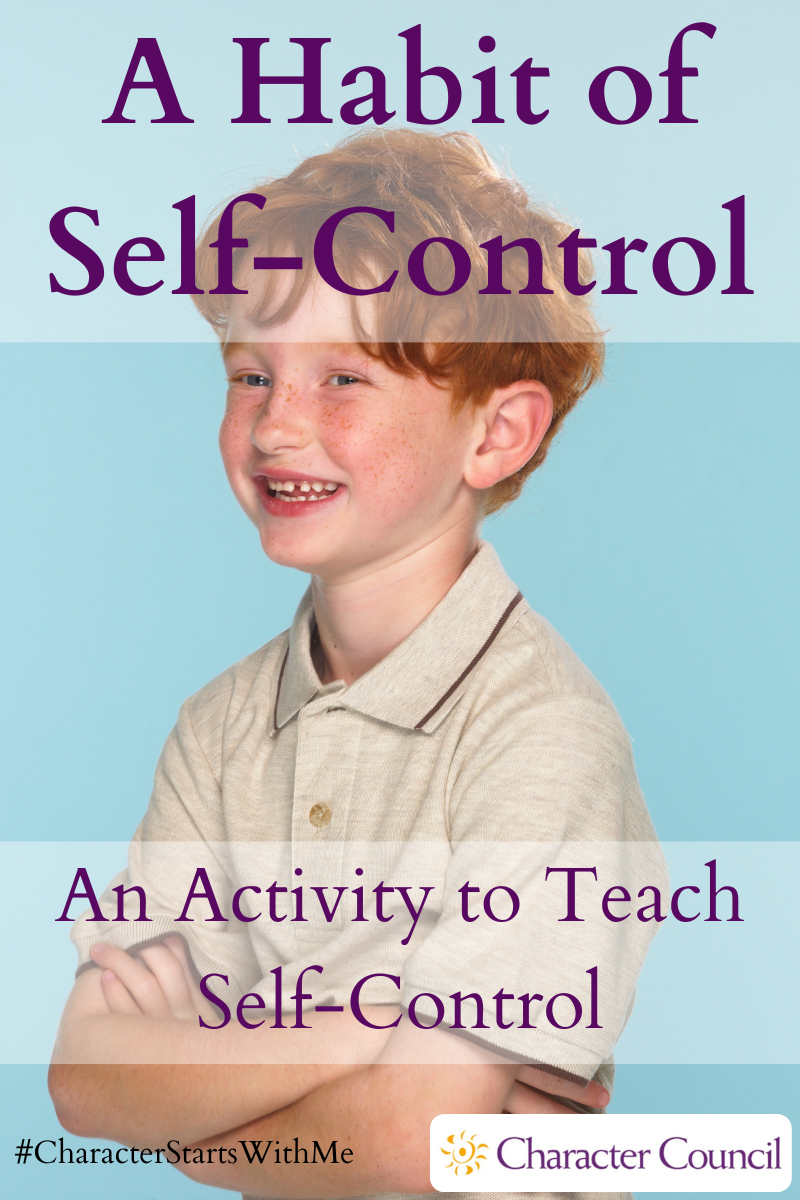
Self-Control Activities
The activities here are fun ways to teach character. The game aspect makes the lesson more memorable. Each activity has processing questions at the end. Without processing the activity, the exercise is just a game. To make it a stronger lesson when you process it, relate the character quality to a core value that your organization promotes.
Consider picking a student to run the activity. You will need to give them time ahead of the activity to prepare. Another option is to pick a few students to run the activity for a younger classroom after you have run it for your class. Encourage your students to repeat it in the home for younger siblings or even parents.


Control
For this game, you can use anything to make noise. It can be a New Year’s Eve noisemaker, recorded music, or even just clapping your hands. Give the class a bodily motion to do – waving their hands, shaking a leg, or whatever you choose. Instruct the class that they are to do that motion only when you are making the chosen noise. When the noise stops, they must also stop. Begin making the noise and make sure everyone is doing the motion. Then stop the noise. Watch as everyone stops. Praise their success. Start and stop the noise several more times, observing reactions. When you have finished, ask them who controlled when they did the motion and when they stopped. The answer is that they did. They were reacting to the noise by controlling their behavior. They were the ones who decided to play by the rules and control their responses based on the instructions they had been given. Self-control is the ability to recognize the right responses and control our behavior accordingly.
To process this activity, ask these or similar questions:
- Did you think that was a silly exercise when I explained it?
- Was it difficult to do?
- Were you surprised that you were the one in control?
- Does that give you confidence that you can control other responses, like when you are mad?

Be A STAR
Stop, Think, And then React is what the acronym stands for.
Explain that sometimes when we lack self-control, we do not stop a moment to consider our reactions. Later, we often regret our response. Taking a little time to think first can save embarrassment later. To practice this thinking, divide the class into small groups. Each group will create a “quiz” for a different group. They will create a scenario that describes an event that someone can react to appropriately or inappropriately. They will then give a good and a bad reaction. Give an example to get them started, such as: When Stella was putting on her coat, she knocked over a few books on the top of a stack of books on her desk. A good reaction would be to pick them up and move on. A bad reaction would be to knock over the rest of the books. Some options for this exercise would be having each group write out a scenario, role-play the scenario, or sketch the scenario. When the activity is completed, remind them to always “Be a S.T.A.R.!!
To process this activity, ask these or similar questions:
- Was it fun to write up these quizzes?
- Did you start with a bad reaction or a good reaction to write your quiz?
- Did you think anyone would choose the bad reaction?
- When you have time to think about something calmly, would anyone ever choose the bad reaction?
- Do you think the examples that you saw in this exercise will help you remember to be a S.T.A.R.?

A Habit of Self-Control
This exercise will demonstrate the strength of habits. Ask students to fold their arms across their chests. Ask them to identify which arm is on top and take a poll. It will vary, and it has no relationship to being left-handed or right-handed. Now, ask them to fold their arms with their other arm on top. It should be awkward or at least something that they have to think about to accomplish. The first time they folded their arms, it was easy – it came from habit. If you made a rule that everyone now had to fold their arms opposite, it would take a while to unlearn the old habit and develop the new habit. Research shows that it takes doing something new about 12 times (some research says 21) before the habit begins to form – longer if you are unlearning an old behavior. Find a habit /behavior that you want to change in the classroom – something small such as quieting themselves down when the bell rings in the morning. Count how many days it takes them to remember to do it on their own. After twelve school days, evaluate the progress. If it isn’t working, give them some hints of how they can remember – a note taped to the desk, etc. and then keep working on changing. Just because it doesn’t change in 12 days doesn’t mean to give up. Reflect on progress actually made – is it getting easier? Once this challenge is over, reward them for achieving success. Now, leverage this success to challenge the students to identify a bad habit they want to break or a good habit that they want to start in their personal life. You can ask them to write it down in a planner or agenda or give them a special paper to write it on. You can also partner them up to share their habits, but make sure they know they will partner before they pick their habit. (You can relate this to math class by graphing the results of what day each student remembers the new habit without having to think about it.)
To process this activity, ask these or similar questions:
- Did you expect it to be awkward to fold your arms the opposite way?
- Do you think it would be easy to learn to always do it the other way?
- Can you think of other habits that you aren’t really aware of?
- Which do you think is harder – breaking a bad habit or starting a new one?
- The next time you see a bad habit forming, do you think you might try to break it before its too hard?